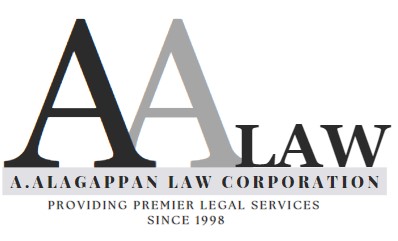
Advocates & Solicitors ι Notary Public ι Commissioner for Oaths
Our Services >
Practice Areas >
Personal Injury
Personal Injury
ROAD ACCIDENTS
As of 1st June 2008, the Motor Claims Framework ('MCF'), has been introduced by the General Insurance Association of Singapore ('GIA') and is intended to be a policy condition which motor insurers will enforce. The MCF sets out procedures for motorists to follow when their vehicles meet with an accident. Under the MCF, all accidents, regardless of how minor, and even if the damage is not visible, must be reported to your insurers within 24 hours or by the next working day. It does not matter if you intend to claim from the insurers or Third Parties; you must still lodge a report with your insurers. With this new policy, all insurers will operate a 24-hour hotline. Even if you enter into a private settlement with the driver of the other vehicle involved in the accident, you must still report the accident to your insurers. You may wish to visit the GIA's website at www.gia.org.sg for more information
.
What to Do at the Accident Site
- You should take down the following particulars:
- registration numbers and name of insurance companies of all vehicles involved in the accident;
- names, NRIC Numbers, addresses and telephone numbers of the drivers, passengers, injured pedestrians and witnesses.
- You should also give your particulars to the other parties involved in the accident.
- Contact your insurers for a tow truck in the event you need one to move your vehicle after an accident, or if you need advice about the accident. You should not engage any unauthorized tow truck operators.
- If it is a serious accident e.g. where someone is injured or has died, call the police. As the police need to draw a sketch plan, do not move the vehicles or dead bodies.
- If possible,
- make a sketch plan or mental note of the accident site, position of vehicles, any landmarks; and
- take photographs of all damage caused by the accident and the scene of the accident, whether or not anyone has suffered injuries. You must keep the negatives of those photographs if you are using a film camera..
- This is important. Many do not realize how essential and helpful sketch plans, photographs of the scene of the accident and photographs of damage sustained are to parties who are trying to resolve the accident claim, be it pre or post writ.
- Note:
Should you, as a vehicle owner, fail to report to your insurers within 24 hours of the accident, then you may find yourself prejudiced. That is, your insurers will have the right to reject your claim or to claim from you any sums paid by them for a third party claim made against you or your driver. This may result in a loss of your No Claim Discount when you review your policy next.
What to Do Immediately After
Police report
You should make a written police report as soon as possible at any police station or Neighbourhood Police Post. If you are hospitalized as a result of the accident, make your report as soon as you are discharged from hospital.
You have to give all the information mentioned in the paragraph ‘What to do at the accident site’.
The report must be made in English. If you have difficulty, ask someone to help you write a report or you can explain the accident to the police officer who will translate it into an English written report for you.
The police report is important because it is the official written record of the accident. Your insurance company, the police and lawyers will refer to it if you make any claim for compensation.
If you delay making a police report or General Insurance Association of Singapore ('GIA') report after an accident without good reason, there may be adverse inferences drawn against you. You must make a report of the accident to your insurers within 24 hours of the accident.
Damage to your vehicle
You should arrange for your damaged vehicle to be removed to the approved reporting centre for a survey to be conducted and for repairs, within 24 hours of the accident or by the next working day. Again you should avoid any unauthorized repair workshops. If, however, you wish to claim against the insurer of the other vehicle, you may wish to give the other vehicle’s insurer an opportunity to inspect your vehicle within a reasonable time (e.g. 48 hours).
Injury to person
If you have been injured, see a doctor immediately and get a medical report.
How Do I Make a Claim
Claim against your own insurance company
In this case, you should note that there may be an 'excess' clause in your insurance policy. Your claim must exceed the excess amount, and your insurance company will only pay the difference between your claim and the excess amount. For example, if the excess amount is $700 and your claim is $500 the insurers will not pay out at all. However, if your claim is $1,000, your insurers will only pay $300. You will also lose your no claim bonus.
Claim against another person
It is advisable to see a lawyer. Please remember that lawyers can represent you only if you authorize them to do so, usually by signing a warrant to act. Please be informed that vehicle workshops are not authorized to make claims on your behalf.
Claiming in hit and run cases
If you suffer personal injuries as a result of an accident and do not know the particulars of the other party that caused the accident, you may make a claim to the Motor Insurance Bureau.
FIDReC Non-Injury Motor Accident Scheme
This scheme was launched recently, on 14 May 2008 at the State Courts.
FIDReC (Financial Industrial Disputes Resolution Centre Ltd) is for non-injury motor claims below $3,000. There are no lawyers involved in this scheme. It is an avenue to resolve disputes directly between consumers and the insurance companies, which are not their own.
Disputes which are not settled at mediation after 2 months will proceed to adjudication. The adjudication process takes about 3 months.
Whilst the mediation is free of charge, parties to an adjudication have to pay the following fees:
1) Consumer pays S$250 per claim; and
2) Financial Institution pays S$500 per claim.
You may visit FIDReC’s website at www.fidrec.com.sg for more information.
Police summons
If you receive a police summons charging you for an offence related to the accident, you should seek advice from a lawyer immediately before taking any course of action. Do note that if you plead guilty, accept a warning or pay the summons, it can be used against you at a civil hearing of the same case.
What to Do If a Claim is Made Against Me
- Report to your insurers
- The moment you are involved in an accident report to your insurers within 24 hours or by the next working day.
- If you receive a Letter of Demand from the lawyers of the other vehicle in the accident or a Writ of Summons, you should inform your insurers immediately. The Letter of Demand will contain a paragraph telling you to forward the claim together with the supporting documents to your insurers.
- In the event a Writ of Summons is served on you personally, you should again immediately inform your insurers so that they can handle the matter for you themselves or appoint lawyers on your behalf to do so. It is important to remember that within 8 days of the Writ of Summons being served on you, a Memorandum of Appearance (a Court document) must be filed in Court, failing which, either a Final Judgment or Interlocutory Judgment can be entered against you.
- It is imperative to be mindful of these matters to avoid incurring or escalating costs for yourself.
- If your insurers repudiate liability for whatever reason, then you may want to engage your own lawyer to handle your case. You will bear the costs in such a case. One common reason for repudiation is if you were driving under the influence of alcohol.
- Non-Injury Motor Claims
- The law allows you 6 years to claim for your property damage, that is, damage to your vehicle.
- Under the Non-Injury Motor Accidents ('NIMA') protocol, non-injury motor claims will most probably proceed for mediation at the Primary Dispute Resolution Centre (commonly called the 'PDRC'). It is presided by a District Judge in a mediation chamber. At the PDRC, they will consider the GIA reports of the parties involved in the accident and any other relevant evidence in order to determine the liability of the parties. Sometimes the Court will direct for parties to appear in person. The District Judge will then give an indication of the liability of the parties, who do have the prerogative of accepting or rejecting the Court's indication.
- In the event both parties accept the indication, they can proceed to settle or negotiate the quantum. Most, if not all insurers, will take away your No Claim Discount ('NCD') if the indication against you exceeds 20%. This is the general policy but of course the prerogative and final decision lies with your insurers.
- On the other hand, if you do not accept the indication of the Court, you must be prepared to proceed to trial. If this is against the advice of your insurers, you will have to bear the costs yourself if you lose the case.
Personal injury cases
- The time limitation for personal injury cases is much shorter. An injured person has only 3 years from the date of the accident to make his claim. Thereafter his claim will be time-barred.
- Like the NIMA cases for property damage, the personal injury claims usually proceed for mediation for parties to resolve the issue of liability first. In the event that is settled at PDRC, then parties will proceed to resolve quantum either at a mediation session for quantum called the 'ADCR' where an indication on quantum will be given by the presiding District Judge or if not settled, proceed for an Assessment of Damages hearing ('AD'). The AD is like a trial but the Court will only decide on quantum.
One has to bear in mind that costs continue to escalate the further one proceeds. Therefore one must consider the practicalities and the cost consequences of any case.
Keeping Records
You should keep a proper record of the following:
- particulars in the paragraph of 'What to do at the accident site';
- copies of police reports and your GIA reports;
- medical and specialist reports;
- a list of expenses incurred, e.g. transport, medical fees and rental of car;
- documents supporting your claim such as photographs (and negatives), medical certificates, repair bills, receipts and so forth; and
- names and particulars of witnesses.
Seeing Your Lawyer
When you see your lawyer, bring along the documents noted in the paragraph on Keeping Records.
Your lawyer will:
- go through the documents and consider the evidence;
- take a statement from you and advise you on the strength of your case;
- write letters on your behalf to claim compensation;
- discuss with you offers made and negotiate a settlement; and
- if a settlement is not achieved, start proceedings in Court, prepare court documents, interview your witnesses and prepare for trial.
What Can a Person Claim
A person can claim:
- General damages
- This compensates you for pain and suffering as a result of injuries caused to your person ('personal injuries'). Discuss with your lawyer how much you can claim as general damages for your personal injuries as there are some guidelines from earlier cases.
- Special damages
- This compensates you for expenses incurred, e.g. costs of medical fees, transport, repairs to vehicle, hiring another vehicle while your vehicle is being repaired, loss of salary and CPF savings contributions before the trial. You must make sure that you keep the original receipts for these expenses.
- Bereavement
- When it is a fatal accident, the Civil Law Act [Cap 43] entitles those listed under Section 21(2) to claim for bereavement. This includes children, parents of the deceased and so forth. It is fixed at $15,000.00. It is not a claim of $15,000.00 per claimant. This is to be divided among the number of claimants notwithstanding how many there are.
At the Trial
- Your action should commence in the State Courts, if your claim is under $250,000.00. Any amount above that is within the jurisdiction of the High Court.
- If proceedings are commenced in Court, there are two questions to be decided:
- Liability i.e. who is responsible; and
- Quantum i.e. how much the damage caused is worth (see What Can A Person Claim)
- For liability, the Court can decide that one party is fully responsible for the accident, in which case, he is said to be '100% liable'. The Court can also decide that the person making the claim (plaintiff) is partly responsible for the accident (contributory negligent).
- The Court will assess the degree of responsibility in percentage terms and divide the damage accordingly between the parties, e.g. if the plaintiff is found to be 20% contributory negligent for a $10,000 claim, then he will only be awarded the sum of $8,000 as damages.
Costs
- The costs you have to pay your lawyer is called 'Solicitor and Client' costs. The costs that the losing party pays to the winning party is called 'Party and Party' costs.
- If you lose your case, normally you will have to pay the other side's Party and Party costs, as well as your own Solicitor and Client costs. If you win your case, the Party and Party costs received by you can be used towards paying your own Solicitor and Client costs which may be more than your Party and Party costs.
- If you are awarded a sum exceeding $5,000 for personal injuries, payment shall be processed through the Public Trustee who will act as your trustee for the amounts due to you. There is a Public Trustee fee of $300 where the amount of compensation exceeds $5,000 but does not exceed $10,000 and $500 where the amount of compensation exceeds $10,000. This is usually paid by the Defendant as part of the entire settlement of the Plaintiff’s claim.
(adopted from Law Society of Singapore)

